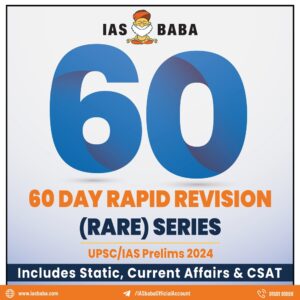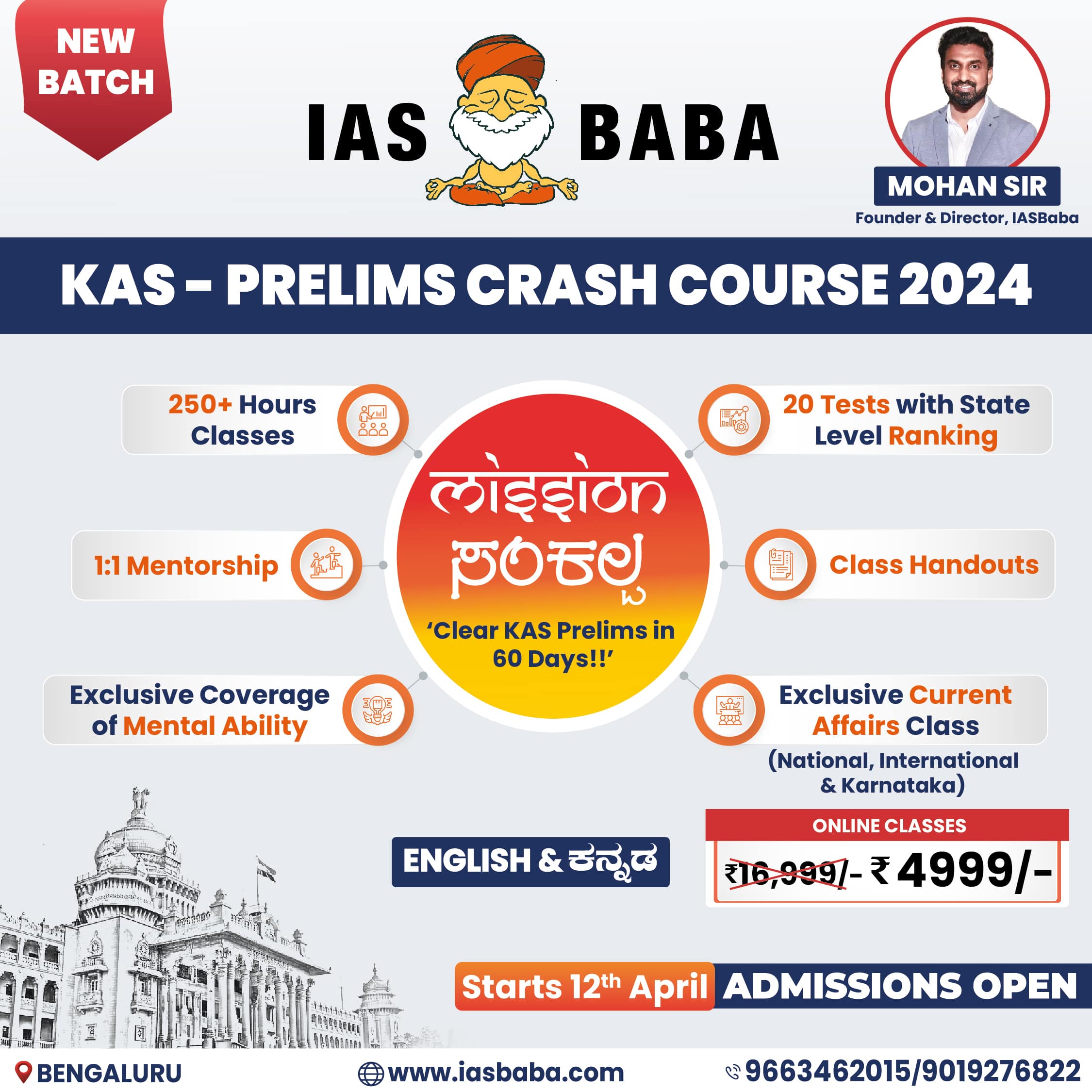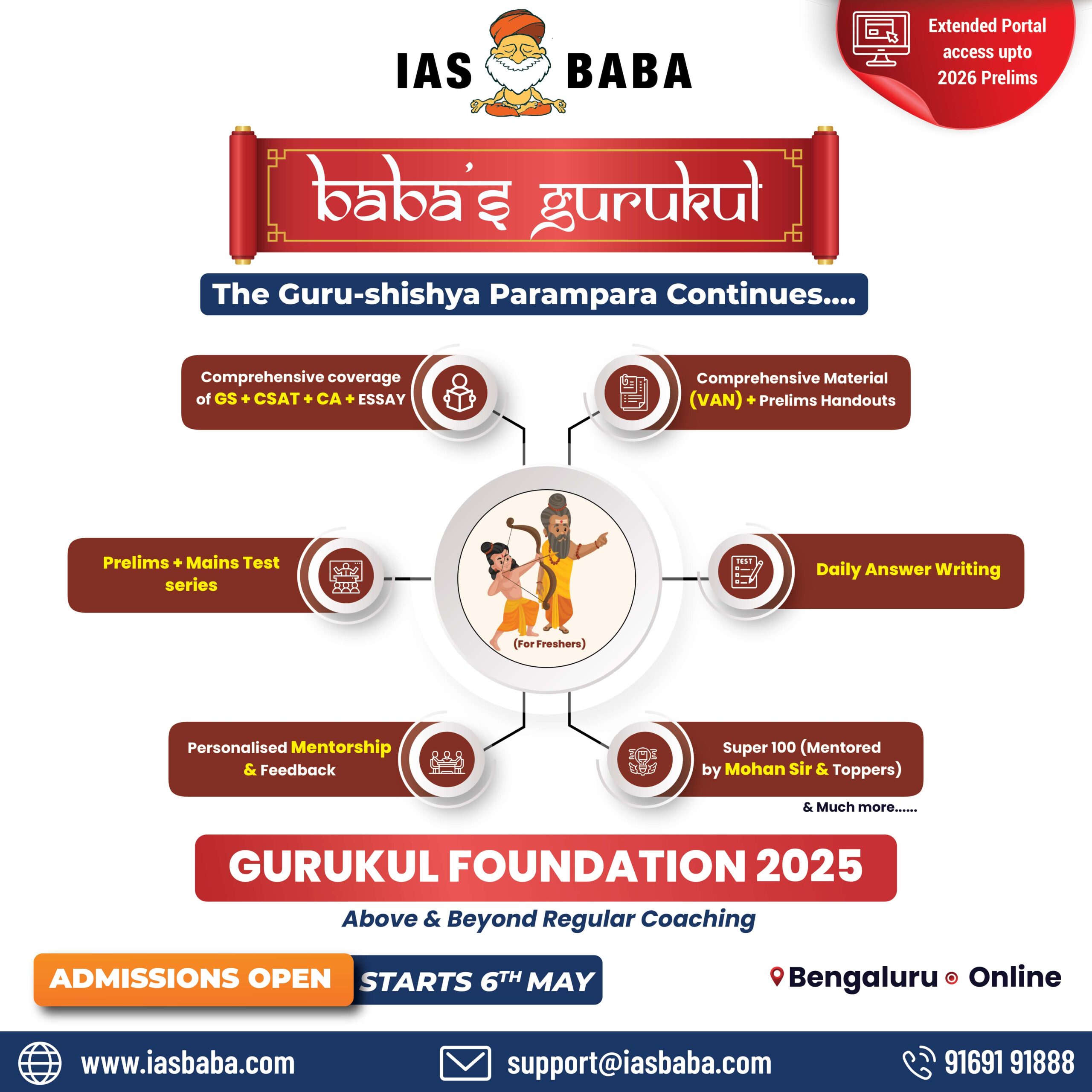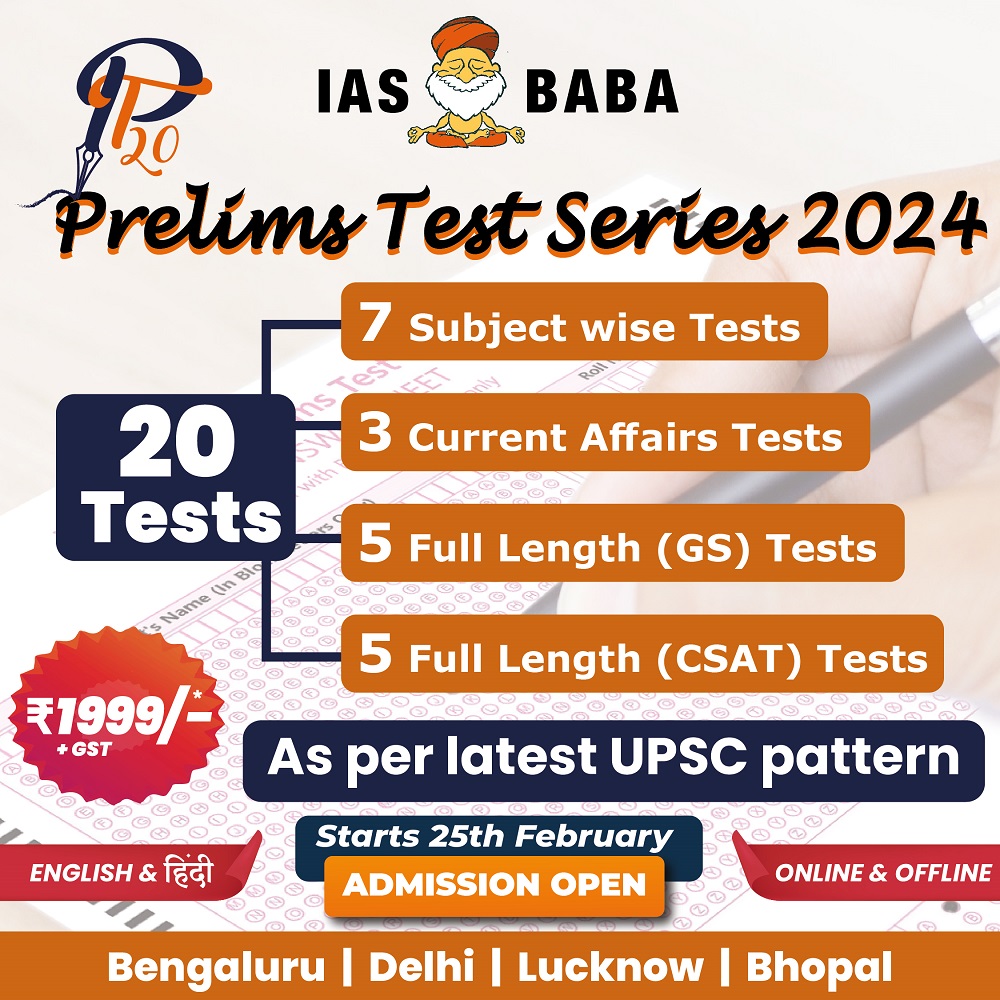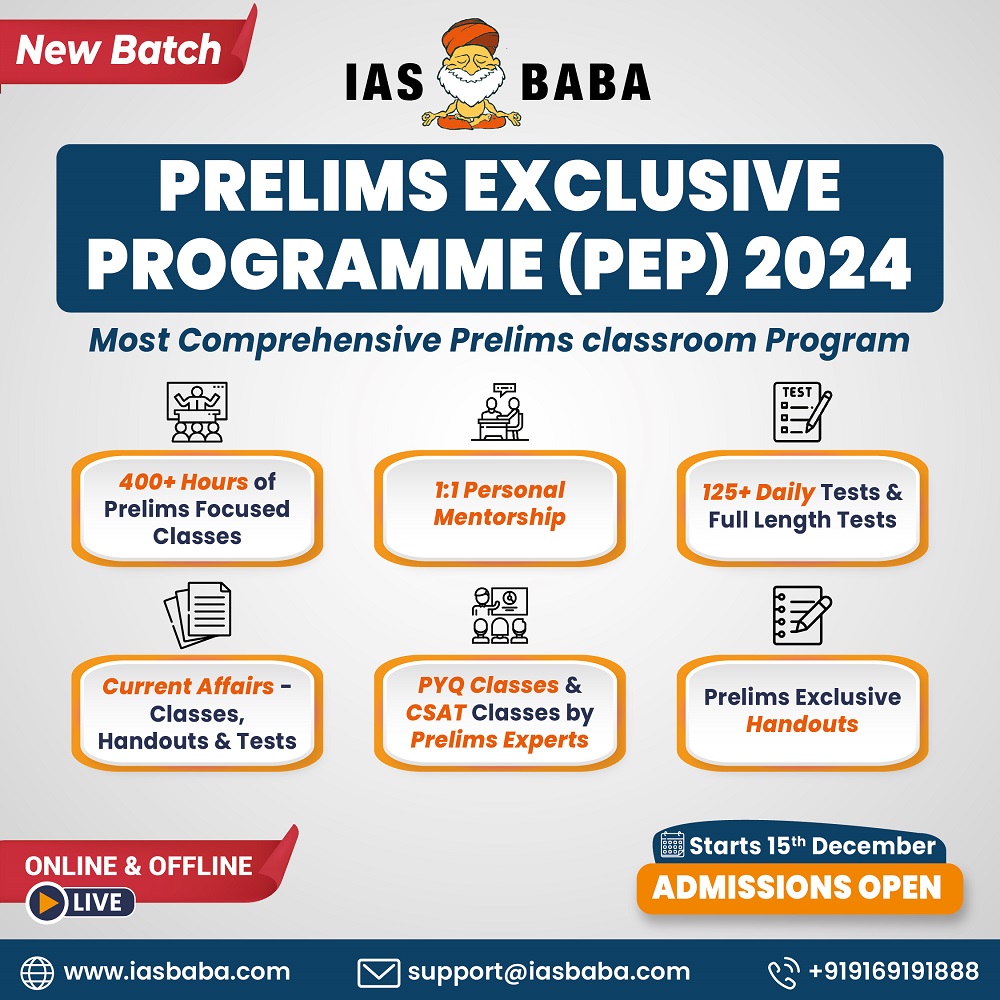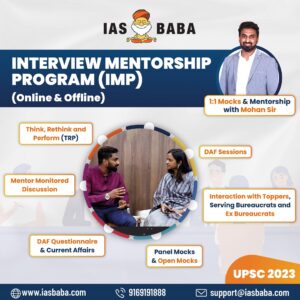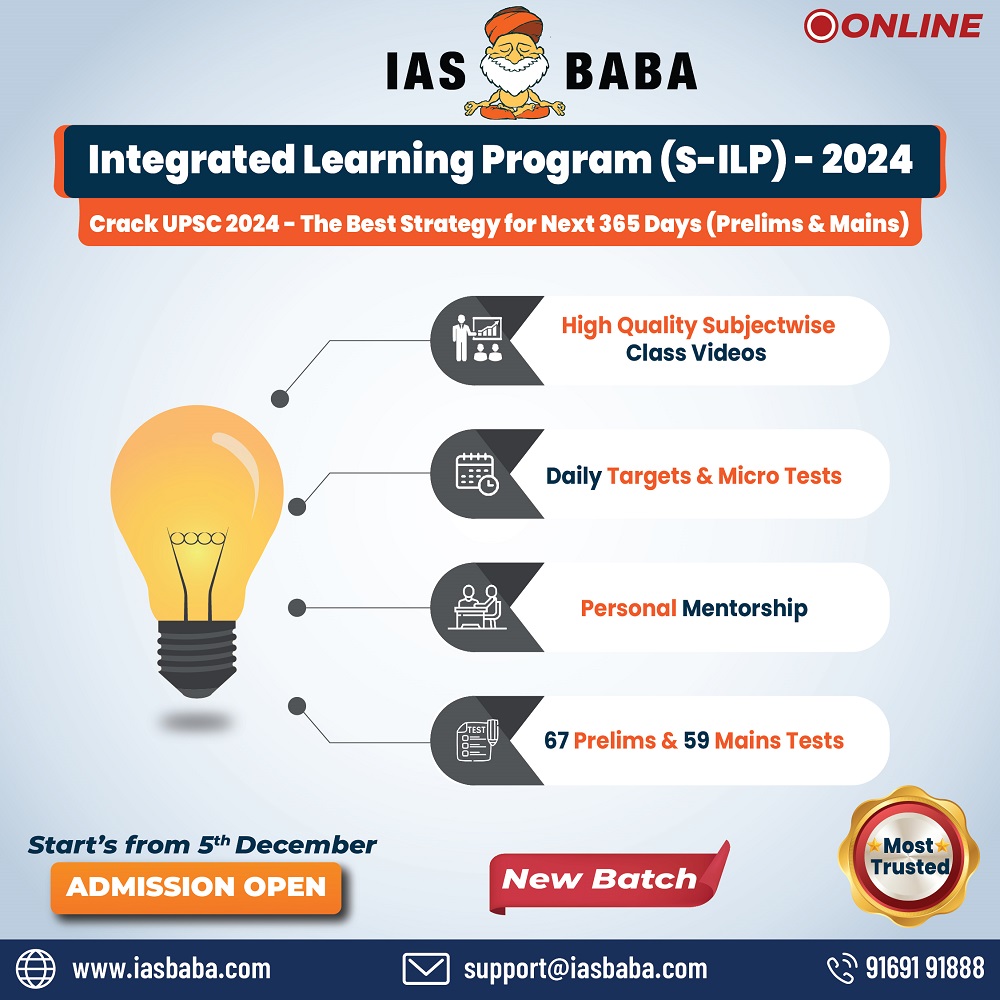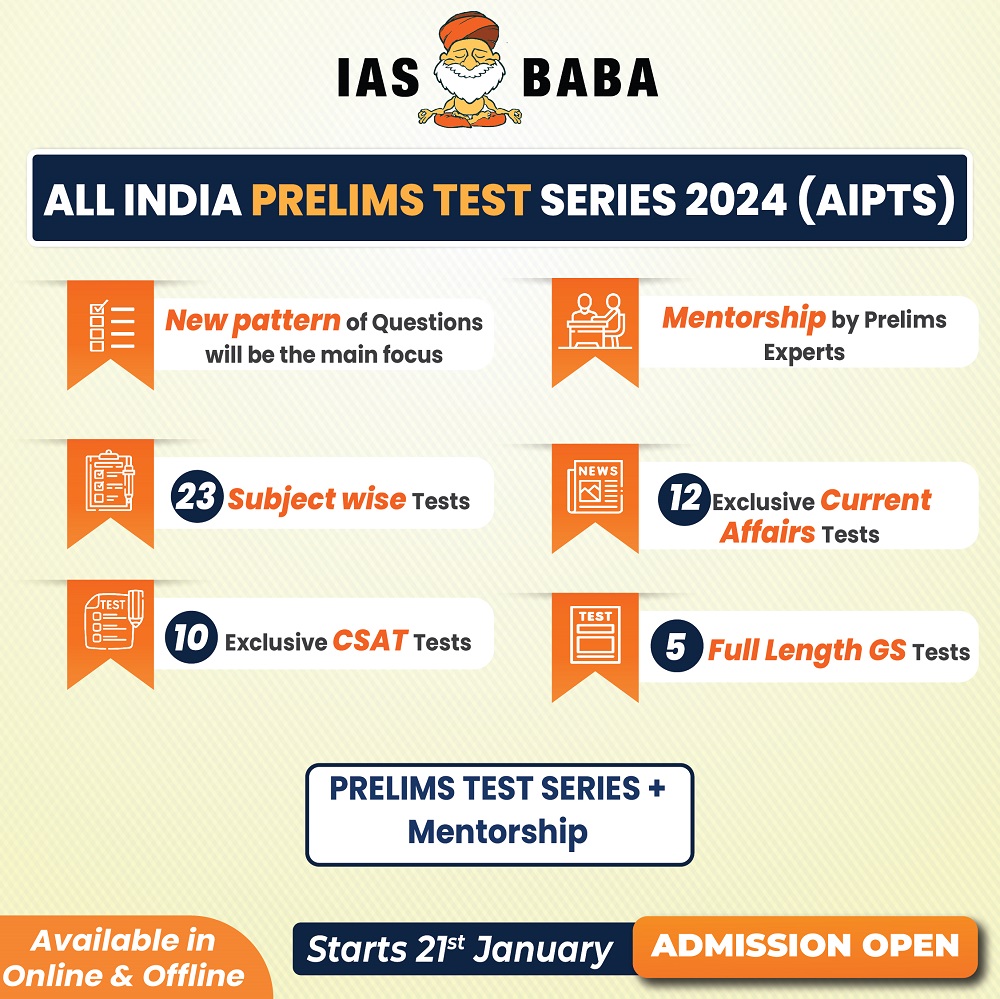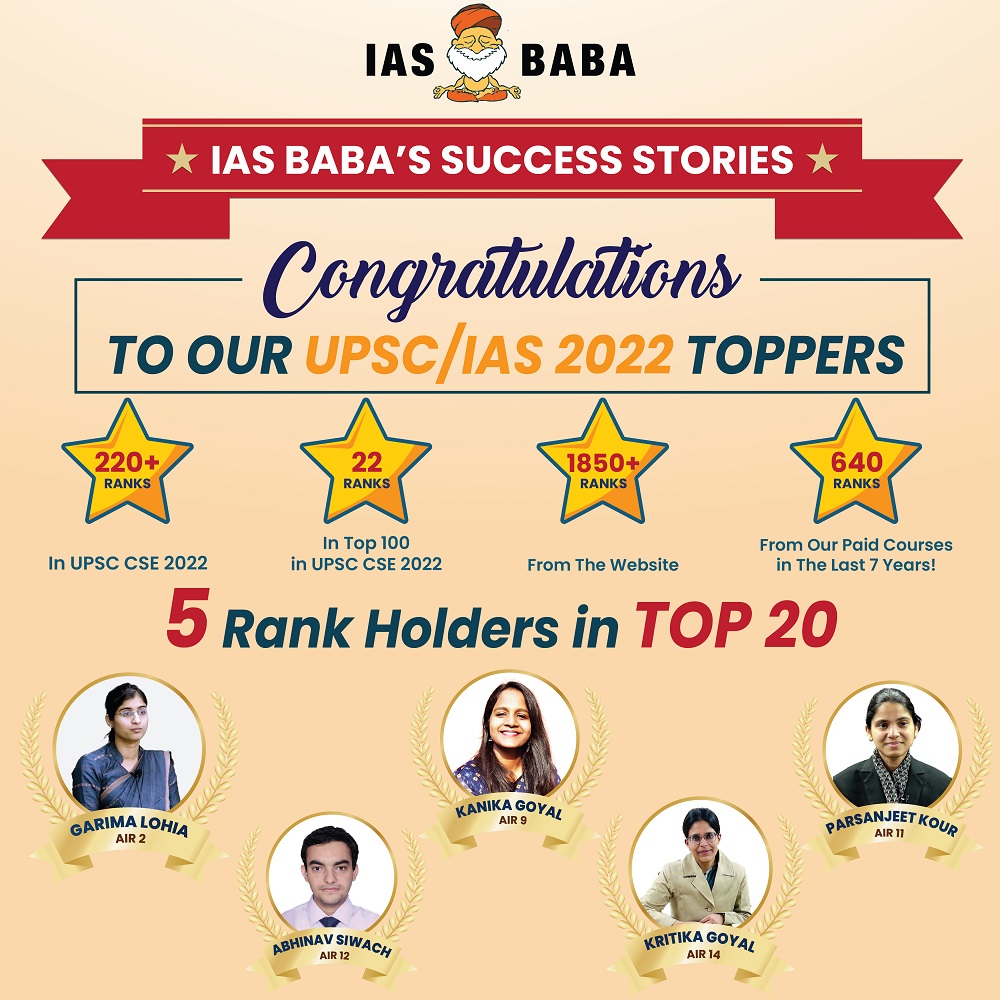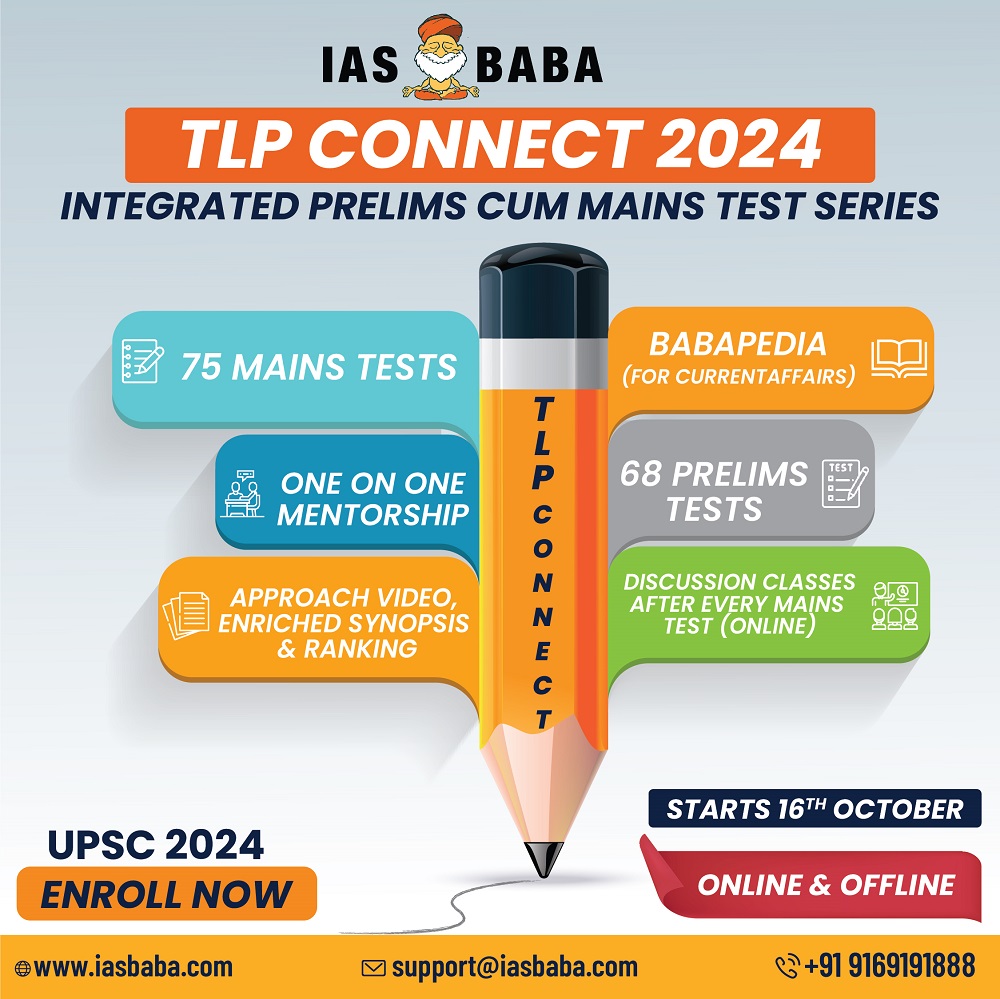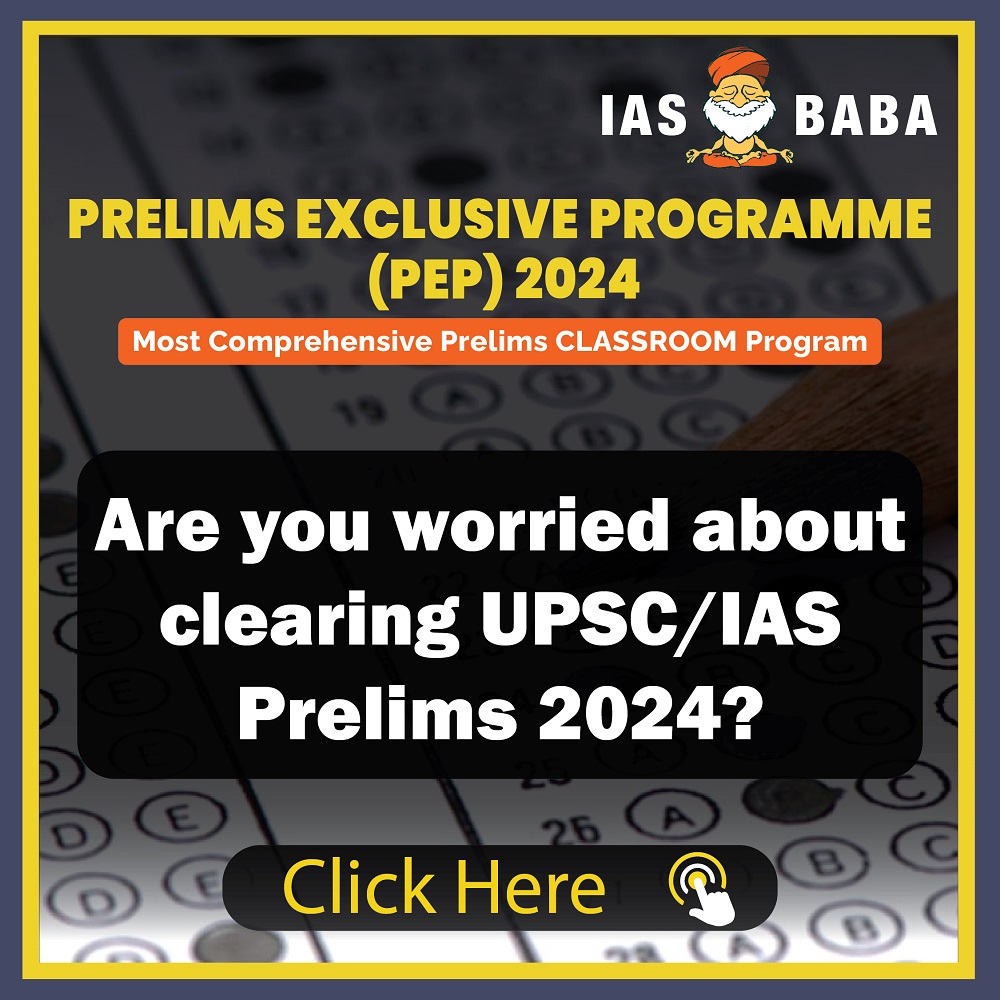IASbaba's Daily Current Affairs Analysis
Archives
(PRELIMS + MAINS FOCUS)
PLACID Trials: convalescent plasma therapy shows no positive effects
Part of: GS Prelims and GS-III – Science and Technology
In news
- Recently, the PLACID Trial, a multicentre randomized controlled trial (RCT), has shown that convalescent plasma (CP) therapy for Covid-19 patients gave no positive effects and did not improve the outcome of the patients.
Key takeaways of the trial
- The trial results indicate that there was no difference in the 28-day mortality.
- Progression of Covid-19 from moderate to severe in patients treated with CP along with basic standard care had no difference when compared to basic standard care alone.
- The use of CP seemed to improve the resolution of shortness of breath and fatigue in patients with moderate Covid-19. However, this did not translate into a reduction in 28-day mortality or progression to severe disease.
- The ICMR is now considering removing the option of CPT from the national guidelines.
Important value additions
Convalescent Plasma Therapy
- Convalescent Plasma, extracted from the blood of patients recovering from an infection, is a source of antibodies against the infection.
- The therapy uses blood from people who have recovered from an illness to help others recover.
- Blood donated by people who have recovered from Covid-19 has antibodies to the virus that causes it.
- The donated blood is processed to remove blood cells, leaving behind liquid (plasma) and antibodies. These can be given to people with Covid-19 to boost their ability to fight the virus.
- The plasma donor would have to be a documented case of Covid-19 and healthy for 28 days since the last symptoms.
PLACID Trial
- It was conducted by the Indian Council of Medical Research (ICMR).
- Aim: To investigate CPT’s effectiveness for the treatment of Covid-19.
- It is the first and largest randomised control trial to be completed in the world.
Do you know?
- RCT is a trial in which subjects are randomly assigned to one of two groups.
- One (the experimental group) receiving the intervention that is being tested, and the other (the comparison group or control) receiving an alternative (conventional) treatment.
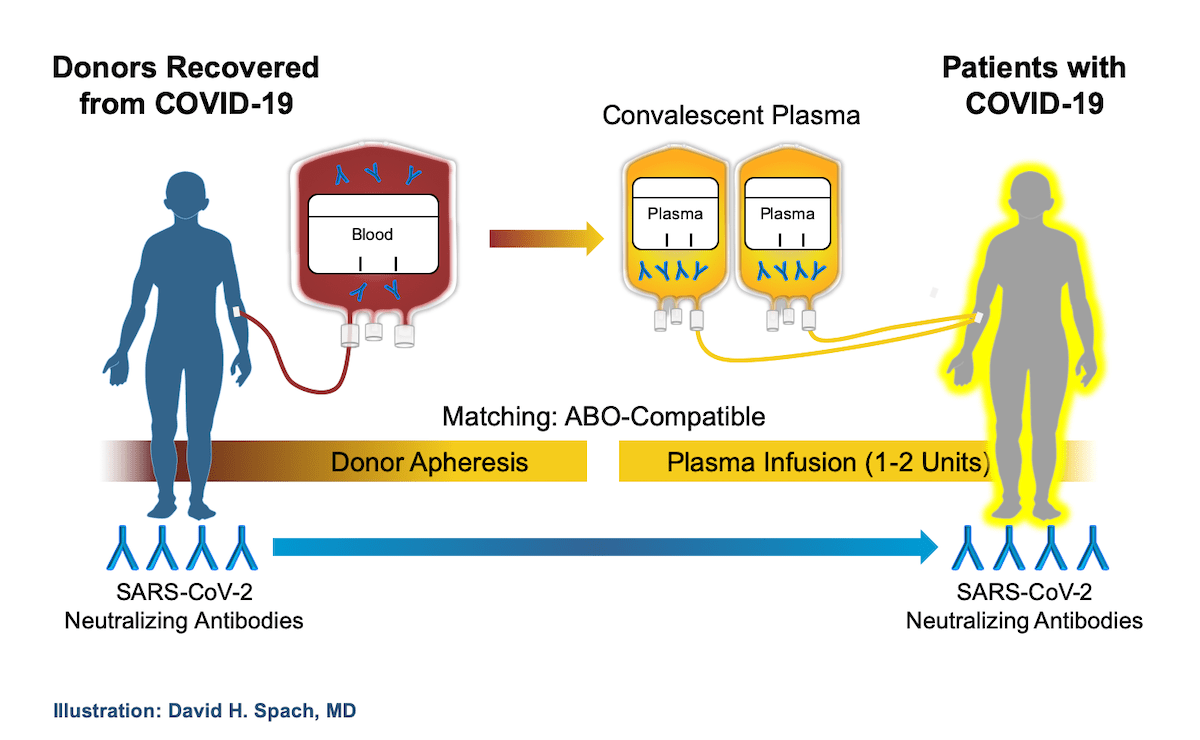
Kochi-Muziris Biennale: Art exhibition and festival
Part of: GS Prelims and GS-I – Art & Culture
In news
- Kochi-Muziris Biennale was in the news recently.
- Its 5th edition has been postponed to 2021 due to the Covid-19 pandemic.
Important value additions
The Kochi-Muziris Biennale
- It is an art exhibition and festival.
- It is the largest of its kind in South Asia.
- Organised by: Kochi Biennale Foundation at Kochi, Kerala.
- The Foundation is a non-profit charitable trust engaged in promoting art and culture and educational activities in India.
- It works throughout the year to strengthen contemporary art infrastructure and to broaden public access to art across India through a diverse range of programmes.
Do you know?
- In mythology, Muziris was a port city, among the earliest of its kind in the world.
- When Kerala established itself as a major center for spice, the ancient port of Muziris emerged as its hub.
- Currently, the Muziris Heritage Project is one of the biggest conservation projects in India, where the state and the central governments have come together to conserve a rich culture that is as old as 3000 years or more.
- The biennale exhibits artworks across a variety of mediums including film, installation, painting, sculpture, etc.
Computation Analysis of Indian Genes published
Part of: GS Prelims and GS-III – Science and Technology
In news
- Recently, the results from the computation analysis of the 1029 sequenced genomes from India were published in the scientific journal, Nucleic Acid Research.
- The analysis was carried out by CSIR constituent labs, Institute of Genomics and Integrative Biology (IGIB), Delhi and Centre for Cellular and Molecular Biology (CCMB), Hyderabad.
- The analysis has found that out of approximately 55.8 million single nucleotide variants in India, around 18.01 million (32.23%) variants are unique and found only in the samples sequenced from India.
- Thus, India-centric population genomic initiative becomes important.
Important value additions
Genome
- A genome is all the genetic matter in an organism.
- It is defined as an organism’s complete set of DNA including all of its genes.
- Every organism’s genetic code is contained in its DNA, the building blocks of life.
- Each genome contains all of the information needed to build and maintain that organism.
- In humans, a copy of the entire genome contains more than 3 billion DNA base pairs.
Genome sequencing
- It means figuring out the order of Adenine, Cytosine, Guanines, and Thymine (DNA nucleotides) in a genome
- Application: (1) Crucial role for new advancements in medical science; (2) In disease management; (3) Researchers and clinicians can easily detect the disease related to genetic disorder.
- The study of entire genome sequences will help understand how genes work together to direct the growth, development and maintenance of an entire organism.
- The genes account for less than 25% of the DNA in the Genome. Thus, knowing the entire genome sequence will help scientists study the parts of the genome outside the genes.
Superconductivity achieved at Room Temperature
Part of: GS Prelims and GS-III – Science and Technology
In news
- Recently, researchers have created a material that is superconducting at room temperature.
- It only works at a pressure of 267 Gigapascals (GPa).
Key takeaways
- A mixture of carbon, hydrogen and sulfur was put in a microscopic niche carved between the tips of two diamonds (diamond anvil) and laser light was used on them to trigger chemical reactions.
- To verify that this phase was indeed a superconductor, the group ascertained that the magnetic susceptibility of the superconductor was that of a diamagnet.
- A superconducting material kept in a magnetic field expels the magnetic flux out its body when cooled below the critical temperature and exhibits perfect diamagnetism.
- It is also called the Meissner effect which simply means that magnetic lines do not pass through superconductors in a magnetic field.
- If researchers can stabilise the material at ambient pressure, applications of superconductivity at room temperatures could be achieved and will be within reach.
- Superconductors that work at room temperature could have a big technological impact, for example in electronics that run faster without overheating.
Important value additions
Superconductors
- A superconductor is a material that can conduct electricity or transport electrons from one atom to another with no resistance.
- No heat, sound or any other form of energy would be released from the material when it has reached critical temperature (Tc).
- The critical temperature for superconductors is the temperature at which the electrical resistivity of metal drops to zero.
- Examples: aluminium, niobium, magnesium diboride, etc.
- Applications: Magnetic resonance imaging (MRI) machines, low-loss power lines, ultra powerful superconducting magnets, mobile-phone towers.
- Limitations: They need bulky cryogenics as the common superconductors work at atmospheric pressures, but only if they are kept very cold.
Do you know?
- Meissner Effect: When a material makes the transition from the normal to the superconducting state, it actively excludes magnetic fields from its interior.
Direct Port Entry (DPE) facility of V O Chidambaranar Port Trust inaugurated in line with Maritime Vision 2030
Part of: GS Prelims and GS-III – Infrastructure
In news
- Recently, the Union Minister of State for Shipping has inaugurated the Direct Port Entry (DPE) facility of V O Chidambaranar Port Trust (VOCPT).
Key takeaways
- The state-of-the-art DPE facility is created inside the Truck Parking Terminal which was developed under the ‘Sagarmala’ for issuing customs clearance of export cargo.
- The facility aligns with the ‘Maritime Vision 2030’ of the Ministry of Shipping.
- Significance: (1) Reduce logistics cost and increase the velocity of the cargo; (2) Enable direct movement of containers from factories; (3) Help in increasing Ease of Doing Business for the exporters.
Important value additions
Maritime India Vision 2030
- It is a ten-year blueprint for the maritime sector which will be released by the Indian Prime Minister at the Maritime India Summit in November 2020.
- It will supersede the Sagarmala initiative.
- It aims to boost waterways, the shipbuilding industry and encourage cruise tourism in India.
- Maritime Development Fund: It is a Rs. 25,000-crore fund, which will provide low cost, long-tenure financing to the sector with the Centre contributing Rs. 2,500 crore over seven years.
- Port Regulatory Authority: A pan-India port authority will be set up under the new Indian Ports Act for enabling oversight across major and non-major ports.
- Eastern Waterways Connectivity Transport Grid project: It will aim to develop regional connectivity with Bangladesh, Nepal, Bhutan and Myanmar.
- Riverine Development Fund: It will extend low cost, long-term financing for inland vessels with the support of a Riverine Development Fund (RDF)
- Rationalisation of Port Charges: It will make them more competitive. All hidden charges will be done away with.
- Promotion of Water Transport
(MAINS FOCUS)
URBANISATION/ GOVERNANCE
Topic: General Studies 2,3:
- Urbanization, their problems and their remedies
- Government policies and interventions for development in various sectors and issues arising out of their design and implementation
Urban Floods: Time for a ‘sponge cities’ mission in India
Context: Torrential rains in the third week of October in Hyderabad during which over 50 people died and hundreds of riverbed hutments were flushed away.
The scale of destruction has been unprecedented. This experience is not unique to the city of Hyderabad but something that cities across India have been experiencing in recent years.
What are the possible reasons for Urban Floods experienced in Hyderabad?
- Unprecedented rainfall: The rainfall received in 2020 has been the highest for the month of October in a century.
- Inability to manage the city’s drainage systems: The floods of October 2020 occurred because discharge of water did not take place on time. And when water was discharged it was in a sudden, uncontrolled manner. To put it bluntly, first sluices did not open and then bunds breached.
- Antiquated drainage infrastructure: Hyderabad’s century-old drainage system (developed in the 1920s) covered only a small part of the core city. In the last 20 years, the city has grown at least four times its original built-up area and not much was done to address the absence of adequate drainage systems.
- Neglecting issues of incremental land use change, particularly of those commons which provide us with necessary ecological support — wetlands. This has led to creation of urban terrain which is incapable of absorbing, holding and discharging water.
One of the promising ideas to deal with Urban Floods is Sponge Cities
- The idea of a sponge city is to make cities more permeable so as to hold and use the water which falls upon it.
- Sponge cities absorb the rain water, which is then naturally filtered by the soil and allowed to reach urban aquifers. This allows for the extraction of water from the ground through urban or peri-urban wells.
- In built form, this implies contiguous open green spaces, interconnected waterways, and channels and ponds across neighbourhoods that can naturally detain and filter water
- These can all be delivered effectively through an urban mission along the lines of the Atal Mission for Rejuvenation and Urban Transformation (AMRUT), National Heritage City Development and Augmentation Yojana (HRIDAY) and Smart Cities Mission
What steps need to be taken to take forward the idea of Sponge Cities Mission?
- Wetland policy:
- In most of our lakes, the shallow ends, which often lie beyond the full tank level, have disappeared.
- These shallow ends are best characterised as wetlands; sometimes owned by private individuals, other times existing as ecological commons.
- Regardless of ownership, land use on even this small scale needs to be regulated by development control.
- Watershed management and emergency drainage plan
- This should be clearly enunciated in policy and law.
- Urban watersheds are micro ecological drainage systems, shaped by contours of terrain.
- Detailed documentation of these Urban watersheds must be held by agencies where natural boundaries instead of governance boundaries (like wards) are used to come up with drainage plan.
- The Metropolitan Development Authorities, National Disaster Management Authority, State revenue and irrigation departments along with municipal corporations should be involved in such work together.
- Ban against terrain alteration
- Lasting irreversible damage has been done to the city by builders, property owners, and public agencies by flattening terrain and altering drainage routes.
- Terrain alteration needs to be strictly regulated and a ban on any further alteration of terrain needs to be introduced.
- Change in material usage
- Our cities are becoming increasingly impervious to water, not just because of increasing built up but also because of the nature of materials used (hard, non-porous construction material that makes the soil impervious).
- To improve the city’s capacity to absorb water, new porous materials and technologies must be encouraged or mandated across scales.
- Examples of these technologies are bioswales and retention systems, permeable material for roads and pavement, drainage systems which allow storm water to trickle into the ground, green roofs and harvesting systems in buildings.
- These not only reduce run-off and the load on infrastructure, but also help keep water in the city for later use.
- Involvement of other stakeholders
- Urban floods of this scale cannot be contained by the municipal authorities alone. Nor can they be dealt with by the State government.
- It can be managed with concerted and focused investments of energy and resources.
- Such investments can only be done in a mission mode organisation with active participation of civil society organisations at the metropolitan scale.
Conclusion
We need to urgently rebuild our cities such that they have the sponginess to absorb and release water without causing so much misery and so much damage to the most vulnerable of our citizens
Connecting the dots:
- Urban Infrastructure projects AMRUT yojana
- The smart cities project is faced with multiple challenges and ambiguities in terms of its financial model, governance and scale. Critically examine.
GOVERNANCE/ SCIENCE & TECH
Topic: General Studies 2, 3:
- Science and Technology- developments and their applications and effects in everyday life
- Government policies and interventions for development in various sectors and issues arising out of their design and implementation
On digital governance, don’t repeat mistakes
Context: There have now been two versions of the Personal Data Protection Bill, a report on non-personal data, and a variety of other proposals to regulate the digital economy from telemedicine to e-commerce to drones.
At a macro-level though, two key problems may emerge related to digital governance
- State overreach
- State is entrenching itself excessively in the process of regulating the data economy
- Compulsory Data Sharing: Both the Personal Data Protection Bill as well as the non-personal Data report contains various clauses and suggestions that mandate compulsory data-sharing with the government.
- Lessons not learnt: The Industries (Development and Regulation) Act of 1951, gave the State a number of similar regulatory powers to dictate the output and prices of industries. This led to suppressing growth and innovation for decades.
- Lack of Clarity on Pricing: Almost 70 years later, the data regime is suggesting mandatory sharing of data for businesses on a fair, reasonable and non-discriminatory (FRAND)-based remuneration. It is not clear on how the State will decide on this remuneration.
- Price Controls: The 4 Vs of data — velocity, volume, veracity and variety — will amplify the problems in setting a price for the data economy. Price controls on data also reduce the incentives for companies willing to invest in the creation of databases — leading to economic and geo-political advantages for other countries
- India’s past experience tells us that State-led pricing will be anything but FRAND-friendly, and, therefore, the State must step away rather than jump in.
- Multiple Regulators
- There is a proposed regulator for non-personal data as well as for e-commerce, in addition to the Data Protection Authority (DPA) to be set up.
- These regulators may be aimed at different aspects of the data economy, yet the significant overlaps among them can’t be ignored.
- Consider an instance where non-personal data linked to an individual’s IP address, which is easily re-identifiable, could be used for targeted advertising for an e-commerce platform.
- This could lead to similar battles between regulators as seen in the SEBI and IRDAI on regulating Unit-Linked Investment Plans (ULIPs). IRDAI had to step in because ULIPs were provided by insurance companies and SEBI had to do so because these consisted of money invested in the market generating returns
- Multiple regulators also lead to the possibility of a lack of oversight, given that each authority presumes another regulator is responsible for regulating that issue.
- The Personal Data Protection Bill earmarks mergers and acquisitions as one area where data can be processed without user-consent — but this could have adverse competition and privacy concerns and can largely become an area overlooked by both the Competition Commission of India (CCI) and DPA.
Conclusion
While keeping the complexities of data in mind, India should not forget the complexities of regulation learnt from its own experience across sectors.
Connecting the dots:
(TEST YOUR KNOWLEDGE)
Model questions: (You can now post your answers in comment section)
Note:
- Correct answers of today’s questions will be provided in next day’s DNA section. Kindly refer to it and update your answers.
- Comments Up-voted by IASbaba are also the “correct answers”.
Q.1 Consider the following statements:
- Convalescent plasma is extracted from the blood of healthy person and transferred to the patient suffering from covid-19.
- The recently conducted Placid trial has shown positive results regarding convalescent plasma therapy.
Which of the above is/are correct?
- 1 only
- 2 only
- Both 1 and 2
- Neither 1 nor 2
Q.2 Consider the following statements:
- Muziris emerged as Goa’s hub when it established itself as a major Centre for Spice.
- Muziris Heritage project is one of the biggest conservation projects in the world.
Which of the above is/are correct?
- 1 only
- 2 only
- Both 1 and 2
- Neither 1 nor 2
ANSWERS FOR 30th October 2020 TEST YOUR KNOWLEDGE (TYK)
| 1 | D |
| 2 | A |
Must Read
About US exiting Afghanistan:
About need for better forecast:
About French Terror Attacks:




